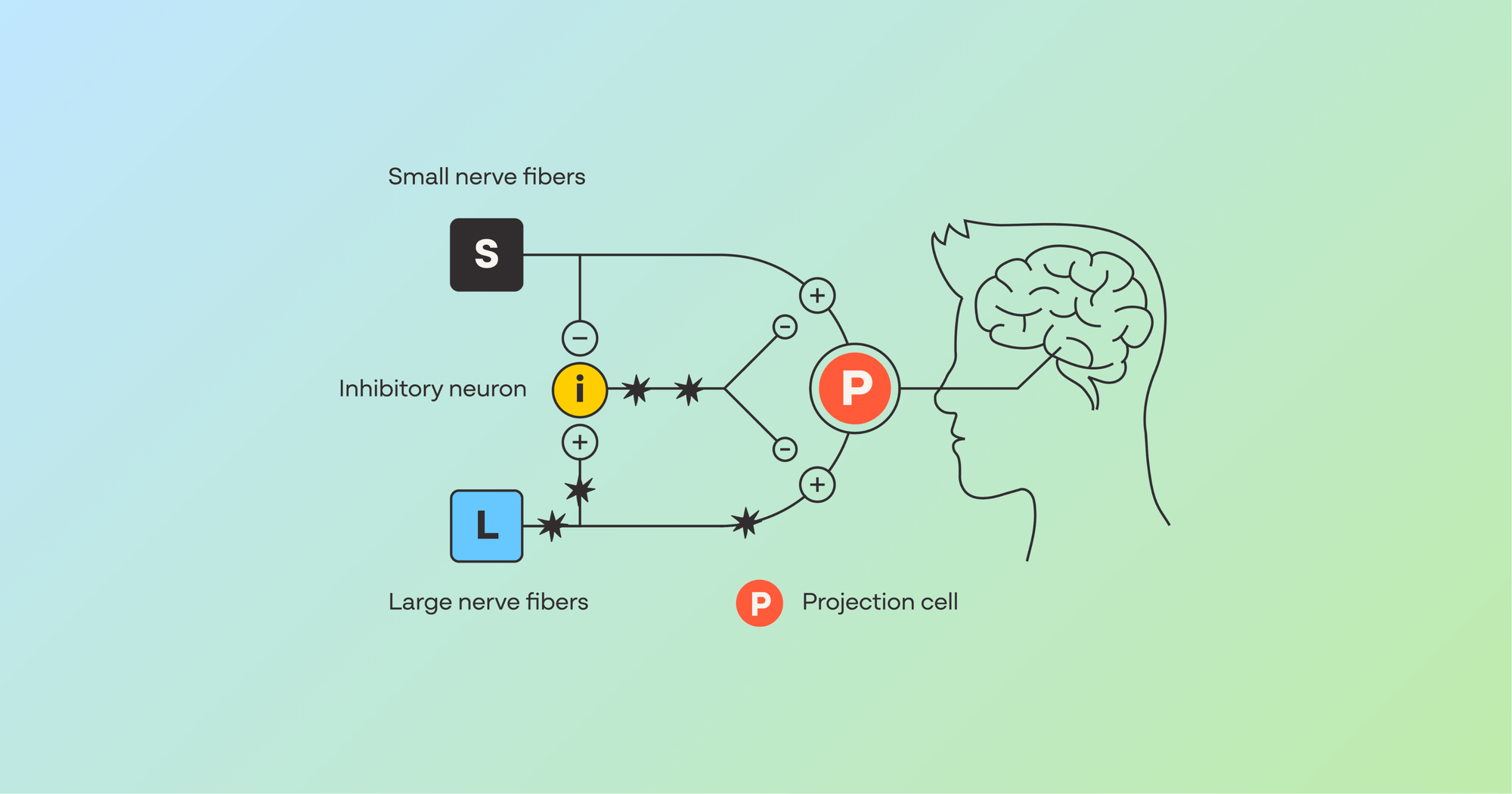

The Gate Control Theory of Pain: The Science Behind Digivibe
The theory of pain is one of the most well-known breakthroughs in pain science. Developed in 1965, it reveals how the brain and spinal cord can regulate — and even block — pain signals. This theory isn’t just fascinating, it’s functional. Especially for people managing chronic pain, fear of injections, or daily discomfort. One of the most fascinating approaches to pain management is the gate control theory of pain. Understanding this theory and its applications can profoundly affect how we perceive and manage pain.

What Is the Gate Control Theory and How Does It Work?
Introduced by Ronald Melzack and Patrick Wall in 1965, the gate control theory suggests that pain is not a straightforward message sent directly to the brain whenever there's an injury. Instead, Melzack and Wall proposed that the spinal cord contains a system of "gates" that either allow or block pain signals before they reach the brain. These gates can be influenced by various factors, including messages from the brain and non-painful stimuli.
- Pain signals: Typically originate from injured tissues.
- Spinal cord gates: "Open" to allow pain or "Close" to block it.
- Brain involvement: Can enhance or dampen the sensation of pain.
How the Spinal Cord “Gates” Pain
The spinal cord acts as a gatekeeper of pain. Nerve fibers of different diameters converge in the spinal cord. Small fibers carry pain signals, while larger fibers transmit other sensations, like touch or vibration. When non-painful stimuli activate the larger nerve fibers, they can help close the spinal gate, reducing the perception of pain.
- Larger nerve fibers: Carry non-painful stimuli.
- Smaller nerve fibers: Carry pain signals.
- Interaction: Larger fibers can inhibit the smaller fibers' signals, closing the gate.
Role of Vibration, Touch, and Non-Painful Stimuli
Vibration and gentle touch are two non-painful stimuli that can play significant roles in the gate control theory. By stimulating larger nerve fibers, these methods help close the gates along the spinal cord, reducing the amount of pain perceived.
- Vibration: Activates large nerve fibers, interfering with pain signals.
- Touch: Gentle stimulation can close the gates.
Real-Life Applications of Gate Control Theory
Applying the gate control theory in real life opens up new options for pain relief. Especially in situations that involve pain relief.
Digivibe and Other Vibration Based Solutions
Activating larger nerve fibers with vibration helps "close the gate" on pain signals, preventing them from reaching the brain and making the overall experience more comfortable. This theory is supported by research published in Mayo Clinic Proceedings, which emphasizes how vibration and non-painful inputs can reduce the sensation of pain. Check out our complete guide to minimizing injection pain. The effectiveness of vibration in reducing pain is supported by clinical studies featured on our site, which explore how non-invasive methods can block pain signals and improve patient comfort.
How Vibration Helps Reduce Injection Pain
For adults, parents, and health-conscious patients, the fear of injections can be daunting. By applying the gate control theory, using vibration devices during injections can meaningfully reduce pain.
- Anxiety reduction: Less perceived pain equals lower stress.
- Effective for sensitive patients: 86% of patients found relief.
- Scientific support: Reduction in pain allows for a more pleasant healthcare experience.
Explore the detailed benefits of such an approach in our blog post on injection pain.
The Gate Control Theory in Everyday Life
Beyond medical devices, this theory explains why rubbing a sore area, applying heat, or even gentle stretching often brings relief. These physical inputs stimulate larger nerve fibers, which in turn help block pain signals from reaching the brain. Understanding how the gate control theory works can improve how we manage not only injection discomfort but also soreness, chronic tension, and acute flare-ups.
Conclusion
The gate control theory of pain offers a scientific yet practical roadmap for managing pain, particularly with something as common as injections. By understanding and leveraging the way our bodies process pain signals, adults and the health-conscious can transform their experiences with easier, less painful solutions. Embrace pain management innovations and explore how they can lessen discomfort today.
Want to feel more in control of your next injection? Explore how Digivibe uses this science to reduce pain.
Share:
0 comments
Disclaimer: This blog is intended for general informational purposes only and does not constitute or substitute for professional medical advice, diagnosis, or treatment. Suthe does not provide medical services, and no content herein should be used to make healthcare decisions without first consulting a licensed healthcare provider. Always seek the guidance of a qualified medical professional regarding your health, wellness practices, or the use of any medical or wellness devices.
